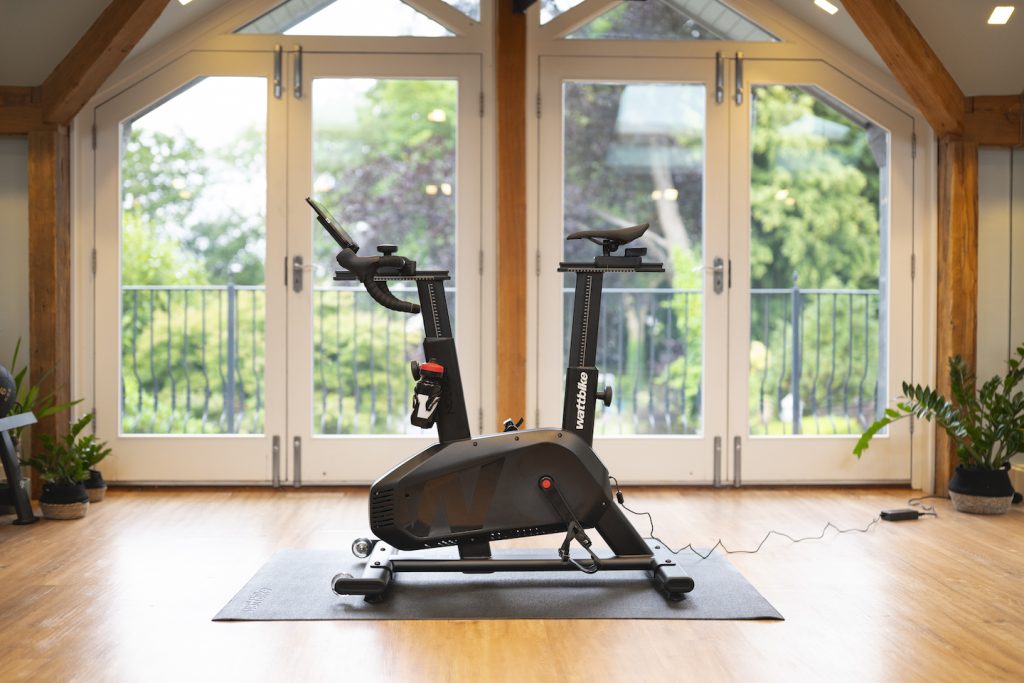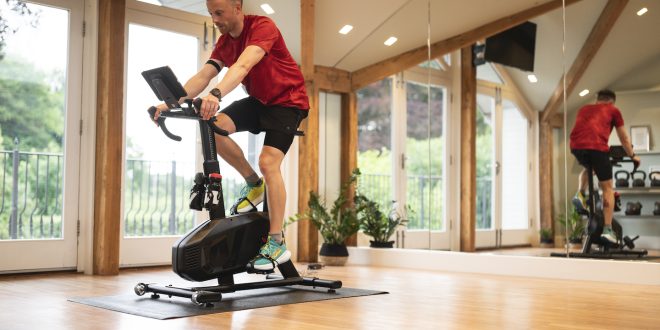Daniel Blackham speaks to Wattbike CEO Stephen Loftus to discuss the indoor cycling market and how the brand’s latest products will benefit a different audience.
Indoor cycling has often held a unique position in the perceptions of the bike industry and its consumers. Some decry it as the antithesis of the sport, others see it as a necessary option to maintain fitness in the colder months and a growing portion is opting to solely focus their efforts indoors as road dangers, patchy weather and reduced maintenance make it a more attractive option.
Throw in the significant development in product alongside the gamification with software such as Zwift, Rouvy, MyWhoosh and the like, it’s hard to see why you wouldn’t at least consider it as a very convenient and fun alternative. But how has it fared post-pandemic?
According to Stephen Loftus, Wattbike CEO, many of the market headwinds faced by most cycling brands are not unique. “At a macro level it’s followed a very similar trend,” he says.
“At the beginning of the pandemic, you could say the indoor market was harder in terms of the peak of the demand. The challenge was familiar. It wasn’t just the demand. It was supply chain commitments suddenly stretching out for a long period of time.
“You had to be a magician to make the right decisions at that time when demand was at such a high, and then you were having to forecast for 24 months when you wouldn’t normally have to.”
With demand pulled forward as people looked for indoor training equipment to stay fit and entertained during multiple lockdowns, the market stalled in a similar fashion to outdoors. Other world events did nothing to ease the situation, merely compounding supply chain and cost of living issues. Despite this, momentum appears to be swinging back in the right direction.
“It’s been really positive in the last three or four months,” says Loftus. “You can look at it on search trends. From a category perspective, the tide is starting to turn. It’s not dramatic, but you can start to see category search, brand search, going up year-on-year, and the movement back into growth, which is great.”
With Wattbike being born in elite sport, – the Pro/Trainer was launched in 2008, and was used by teams across cycling, football and other sports – its proposition spans more than just a cycling audience. Products can also be seen up and down the country in many major gym providers.
“This is a new sector for me,” adds Loftus, referring to gym providers and health clubs. But anyone I’ve spoken to has shown that it’s in rude health with generations Y and Z being even more keen on working out in gyms and looking for that form of exercise, so that area where we have a presence has recovered quickly.
“Elite sport sector [also] bounced back really quickly from the pandemic,
New products for a wider audience
The Atom has been a hero product for Wattbike since its introduction in 2017 before updates came in 2020 and 2022. As a revolutionary home trainer catered to the performance cyclist, with built in power meter and connectivity with training apps like Zwift, it is squarely targeted at the core market of typically male, 35-55-year-old road cyclists.
However, last month saw the brand introduce two new products. The Wattbike Proton smart bike (£1,795) and Wattbike Air (£1,895) bike sit alongside the Wattbike Atom (£2,395).
 The launch of the Proton is designed to enable Wattbike to offer its proven technology in a highly versatile format that helps those dedicated to their fitness to train for a variety of goals, on a bike that can be shared easily with different users at home suitable for users from 4’6” to 6’6”.
The launch of the Proton is designed to enable Wattbike to offer its proven technology in a highly versatile format that helps those dedicated to their fitness to train for a variety of goals, on a bike that can be shared easily with different users at home suitable for users from 4’6” to 6’6”.
Whereas the Air brings the platform used in elite sports and gyms worldwide to the HIIT and team sports focused home user. And the demand for each is certainly there. An in-house survey of 2,000 Atom owners found that nearly 50% weren’t keen road cyclists but were high fitness enthusiasts – a surprise to Loftus and his colleagues.
“The existing product [Atom], which is very focused in its design and proposition for the road cyclist, is already pulling in more people,” he says. “We always thought there was an opportunity, and we always wanted to broaden our range, but it highlighted that there’s likely to be quite a demand when we cater for more people.
“The thing we are trying to do with these new products is differentiate between the types of customers and where and how they use the product,” explains Loftus.
“Wattbike Atom is still very male and still follows that profile. I would say a lot of the road cycling for indoor training products are the same, whether it’s a turbo trainer or quite a large amount of the smart bikes. If you went to Peloton, clearly, which is a health and fitness focused product, it’s got a much broader profile.”
The starting point for all Wattbike products is an intrinsically motivated, dedicated fitness enthusiast at home. With the road cyclist catered to, it became about reaching the breadth of Wattbike customer
“Ease of use was a primary factor,” says Loftus. “The other factor was recognising how many of our potential customers were going to be multi users and easy adjustability for not just different sizes, but different use cases.”
Although the introduction of two new products is Wattbike looking to grow its routes to market, the foundation of elite sport remains, as does its relationship with gym providers.
“What we’re trying to do is try and bring all of these channels more closely together and let them work for each other’s benefit,” explains Loftus. “Elite sport as the foundation remains, then into the gyms and then direct-to-home.
“By creating bikes that are trusted by the best sports teams in the world and the best gyms in the world, it sets a standard, which I hope that then gets reflected in the home product.
“We’re not complacent, we have to continue to develop our products for every channel.”
Wattbike Hub
The Wattbike Hub is a training app which has hundreds of workouts and training plans developed by fitness experts, inspired and built from Wattbike’s expertise in elite sports and healthcare. Content on the Wattbike Hub has been overhauled alongside launches of the Proton and Air, including new workouts tailored for runners and an enhanced user experience.
“We’ve slightly hidden our magic, which is the data and our training platform,” adds Loftus. “The free to use Wattbike Hub is a cornerstone of our product offering.
“By continually enhancing our training app we are providing our users with a holistic training experience that’s both highly effective and engaging.”
When asking its customers why they opted for a Wattbike, second to quality and robustness was the quality and nature of the training platform – and the fact it is free.
“It’s a great USP, so we’ve really tried to put that much more front and centre,” adds Loftus. “We want to really accelerate the interface to make it as accessible as possible. It’s a big development area for us, but we already have our existing customers who are using it and really rate it highly. We just have to let more people know about it.”
Development will also see further integration with third-party apps such as Strava and Zwift.
“We want to make it as accessible as possible to improve people’s health and performance,” concludes Loftus.
“We recognise from our research that most people have two or three apps they use regularly with a Wattbike, so we’re really keen to iron out any friction for those integrations. Everyone will have different goals [when using a Wattbike], we just have to make sure we’re ready for whichever goal that might be.”

 BikeBiz Bicycle and cycling retail news
BikeBiz Bicycle and cycling retail news




